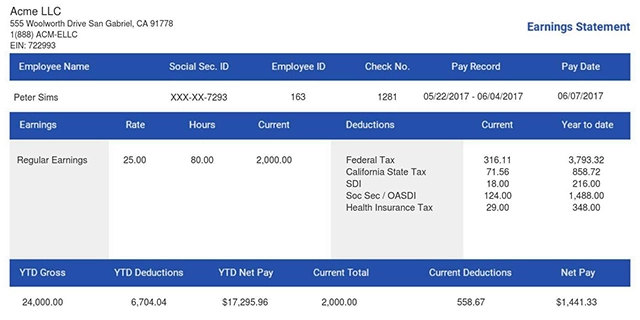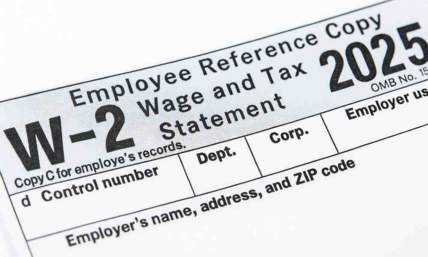How To Calculate Your Extra Pay Using an Overtime Calculator
It is a great thing to get the job done and to do it excellently. Have you, however, wondered if those late nights and extra hours will translate to a padded wallet?
With the increase in living costs and rising inflation, a little extra can go a long way. You should know that extra hours can make a meaningful difference to your net pay and the taxes that apply. An overtime calculator takes the guesswork and uncertainty out of your paycheck.
With an overtime calculator, you can calculate your overtime pay and how it affects your net income. Here, we will show you how to do it and provide tips and tools to help you track your hours.
What Does Overtime Mean?
At some point or another, you must have heard the term "Overime" used in a workplace. Almost every one of working age is aware of the overtime sector of their jobs. Overtime refers to the number of hours worked beyond your regular schedule for the week. Under most labour laws in the United States, the standard work schedule is 40 hours per week.
Not many people know if overtime is suitable for their finances and how they can use it to their advantage. To many, it mostly depicts extra work hours and a very long day. On the other hand, it also means more pay. If you understand how overtime works and how to calculate it, you can go home with better pay.
The labour laws guiding overtime work aim to protect the interests of the employees. It prevents overworking and ensures all employees are treated fairly for their work. These key rules apply under the Fair Labor Standards Act (FLSA):
-
Standard Threshold: 40 hours per week
-
Recordkeeping: Employers must track actual hours worked by their employees.
-
State Variations: Some states set daily thresholds for work hours. Anything beyond that is considered overtime—for example, 8 hours/day in California.
What Is “Time and a Half”?
Overtime payments are usually referred to as the overtime premium or the overtime rate of pay. The standard rate for overtime hours is time and a half, which is 50% more than your standard wage. That means each overtime hour fetches 1.5 × your regular hourly pay.
Depending on your state's labour rules and company policies, this rate might vary. They are usually called multipliers. These are used on an overtime calculator to get accurate results.
Why Should You Use an Overtime Calculator?
After a long day, made even longer with extra hours, the last thing you want to do is crunch numbers. Having an overtime calculator smoothens this process for you, taking out the risk of human error. With an overtime tax calculator, you have more confidence in the figures that add up to your final pay.
These include your total work hours, the taxes that apply and the extra cash that goes home with you. The key benefits of using an overtime calculator are:
-
Instant Results: An overtime calculator saves you hours of crunching numbers. You save time scribbling papers and learning formulas. With just a few taps and a few numbers here and there, you can learn about your overtime pay quickly.
-
Increased Accuracy: With a calculator, there is a reduced risk of errors that come with manual calculations. Once you input the correct numbers, like your hourly rate for extra hours, you get your pay in seconds.
-
Scenario Planning: Why wait till after you have worked the hours to know what is in it for you? With an overtime calculator, you can predict the "what if" scenarios. What will the overtime pay be if you work five extra hours versus 20? You can find out about this with an overtime calculator.
-
Better Budgeting: With better management of your finances, you can better plan your budget. An overtime tax calculator helps you know your tax deductions on overtime and how much goes into your net pay.
How To Calculate Your Pay Using an Overtime Calculator
There is key information you need to gather to calculate your overtime pay. These figures are products of standard formulas and are required in order to get your correct overtime pay. These are the key details to gather and note before calculating your overtime pay:
-
Regular Hourly Rate (HRP): This refers to your standard or base pay per hour. It is the rate you received for hours worked under the standard or regular schedule.
-
The Multiplier (m): A multiplier is the rate against which your regular hourly rate is multiplied. The product would give you your hourly rate. By standard, the multiplier is usually 1.5. However, these vary based on labour laws and policies or the nature of work.
-
Hourly Overtime Pay (HOP): Your hourly overtime pay is the product of your regular hourly pay and the multiplier. It is usually a higher hourly figure compared to the regular hourly rate. The formula is HOP = HOR x Multiplier.
-
Overtime Hours (n): This represents the sum of all extra hours worked by an employee within a pay period.
-
Overtime Pay (OP): Your overtime pay is the result of your hourly overtime pay and your total overtime hours. It is usually calculated with reference to a set pay period. The formula used is OP = HOP x n(overtime hours)
-
Total Pay (TP): This will be the sum of your regular pay and your overtime pay for all hours worked, respectively. The formula is tp = RP + OP.
Where RP = HRP × regular hours (e.g., 40).
For example:
Assuming your regular hourly rate to be $20 and your standard work hour is 40:
Your multiplier (m) = 1.5
And your overtime hours (n) = 10 hours
Your hourly overtime pay would be HOP = $20 × 1.5 = $30
This will make your overtime pay (OP) = $30 × 10 = $300
Regular pay would be = $20 × 40 = $800
Total Pay is the sum of your regular pay and overtime pay. TP = $800 + $300 = $1,100
You can automate this process and calculations by inputting the figures for each detail into an overtime calculator. An overtime tax calculator would take your tax and deductions into account. Add these figures to the calculator, and it will handle each formula instantly.
The Pros and Cons of Using an Overtime Calculator
Before you commit to those extra shifts, it's wise to consider both the financial and personal impacts.
Pros
Before diving into whether an overtime calculator is right for you, it's helpful to weigh its advantages.
-
Speed and Convenience: Instantly computes extra earnings without the manual process.
-
Improved Accuracy: Built-in formulas help to reduce human errors in calculations.
-
"What-If" Scenarios: Easily model different overtime hours or rate changes to see how they'd impact your next pay stub and budget.
-
Consistency & Recordkeeping: Many calculators let you save or print results. You can attach your results to your pay stub copies for audits or lender applications.
Cons
It's equally important to understand the potential downsides of an overtime calculator.
-
Over-Reliance Risk: Using calculators without cross-checking pay stubs can cover payroll errors.
-
Limited Context: Calculators won't flag missing deductions or unusual bonus structures.
Common Exemptions From Overtime Pay
Not every extra hour worked gets overtime pay. Legally, some professions are exempt from overtime pay under the FLSA. For these categories, you would likely not be getting overtime pay for extra work hours:
-
Executive Exemption: Salaried managers overseeing 2+ staff.
-
Administrative Exemption: Employees having independent judgment on important matters.
-
Professional Exemption: Roles requiring advanced knowledge and focus.
-
Highly Compensated Employees: Annual earnings exceed $107,432.
Tools and Tips for Tracking Your Overtime Hours
An overtime calculator is fast and efficient. However, it still relies mainly on the date you input to be accurate. Proper and correct recordkeeping is key, and here are tools and tips to help:
-
Time-Tracking Apps: Tools like Clockify or Toggl log your daily hours and flag overtime automatically.
-
Spreadsheets: A simple table with date, clock-in/out, regular hours, and overtime hours.
-
Pay Stub Reviews: Compare your calculated overtime with each pay stub to spot discrepancies early.
Wrapping Up
Knowing what you'll earn from those extra hours transforms over time from a guessing game into a strategic income boost. By using the straightforward formulas and tips in this guide, you can confidently calculate your overtime pay. Plan your finances, and even negotiate better rates with complete transparency.
Ready to turn those numbers into polished documentation? Our Pay Stub Generator lets you instantly craft professional pay stubs. These include your overtime breakdown: no more manual spreadsheets or messy notes. Capture every detail of your earnings with accuracy and ease.















